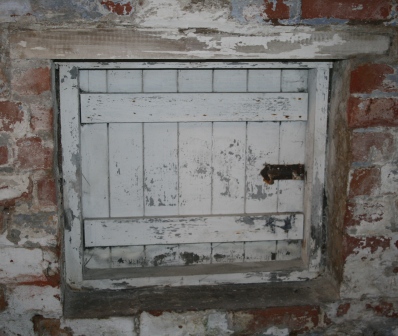White Street
8 WHITE STREET
This photograph, discovered in 2012, has ‘8 White Street’ pencilled on the reverse. The Reverend John Birks, a Unitarian Minister, had purchased 8 and 10 White Street in 1902 and rented the houses out.
By researching local directories and census returns dating back to the 1840s we are fairly sure that this picture is of Rev. John Birks and his second wife, Sophia, especially as the man in the photograph wears clerical dress.
John was born in Stoney Middleton, Derbyshire in 1839 and trained in Salford as a minister. He married Matilda Bore (from Ashover, Derbyshire) in 1862, but they didn't have any children. They employed Sophia Mole as a domestic servant - in the 1871 census she appears as their servant, aged 19.
John worked in Somerset for 14 years, but in 1883 he was ‘invited to take charge of the congregation’ at Friar Gate Unitarian Chapel in Derby.
Matilda died in 1900. In October 1902, when John purchased 8 and 10 White Street he lived on Kedleston Road, but by the 1911 census he was back in Somerset, with Sophia listed as his housekeeper. Sometime before 1915 he moved to 8 White Street and in 1921 he and Sophia married - he was 82 and she was 69. He died in 1930 aged 91.
WORLD WAR 2 HOME FRONT
During World War 2 many people in the area used their cellars as air raid shelters. Often a small escape hatch was inserted between party walls, and sometimes a supporting wall was built down the centre of the cellars to strengthen the floor above in case of an air raid.
Air Raid precaution leaflets suggested filling most of the cellar with crates or boxes filled with rubble to protect from bomb blasts.
Escape hatch, 50-52 White Street
Cigarette card showing types of protection that could be used to reinforce cellars and refuge rooms against bomb splinters
54 & 56 WHITE STREET - THE DOUGHTY FAMILY
54 and 56 White Street were built by the Doughty family in 1901. The plans for the semi-detached houses were submitted to the Local Sanitary Authority in January 1901 by J J and J F (John) Doughty.
Once the houses were built, John (a railway clerk) and his family lived in 54. The other house did not stay in the family.
Anecdotal evidence suggests that the houses were named ‘Glencoe’ and ‘Killarney’ after favourite holiday destinations of the family.
Monica (born in 1908) continued to occupy the house until her death in 1998. Miss Doughty taught Physics at Parkfields Cedars School from 1932 to 1937 and again from 1945 to 1968. She was a stalwart member of Broadway Baptist Church.
She is fondly remembered by one of her neighbours:
“Miss Doughty wore a red woollen pull-on hat over her white curly hair. She told us how she loved the hat: its warmth, and its colour. I have three images of that red hat:
Miss Doughty pedalling against the wind and weather on her black-framed bicycle.
Miss Doughty down on her knees, fork in hand, weeding the pathways at Broadway Baptist Church - even while she observed how weeds too have their purpose and beauty.
Miss Doughty riding the miniature train that encircles Markeaton Park.”




